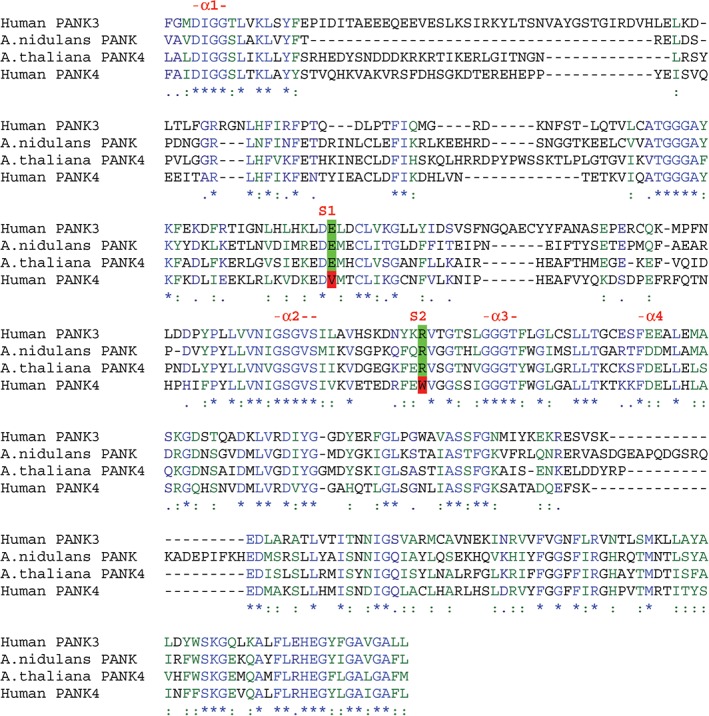Figure 1.

Multiple sequence alignment of the human PANK3, human PANK4, Arabidopsis thaliana PANK4, and Aspergillus nidulans PANK. Key sequences required for the function of human HsPANK3 are conserved in eukaryotic pantothenate kinase domains. The catalytic kinase domain (KD) of Clade 2 HsPANK3, A. nidulans (fungal) Clade 1 monofunctional kinase, A. thaliana Clade 1 HsPANK4‐related kinase/phosphatase (AtPANK4, called plant Pank2), and Clade 1 HsPANK4 were aligned to compare HsPANK4 to the sequences of three eukaryotic proteins known to possess pantothenate kinase activity. Regions of sequence conservation are observed over the entire catalytic domain. There are four highly conserved regions with established roles in the interaction with ATP.10 They are the DIGGS motif (α1), the VNΦGSGVSΦ region (α2), the ΦGGGTΦ region (α3), and the short FE(D)E (α4) sequence. Two key active site residues in HsPANK3, A. nidulans monofunctional pantothenate kinase, and AtPANK4 that are not conserved in HsPANK4 are highlighted. Glu138 (S1) is essential for phosphate transfer in the kinase reaction, and Arg207 (S2) is responsible for interacting with the carboxyl and the amide carbonyl of pantothenate.
